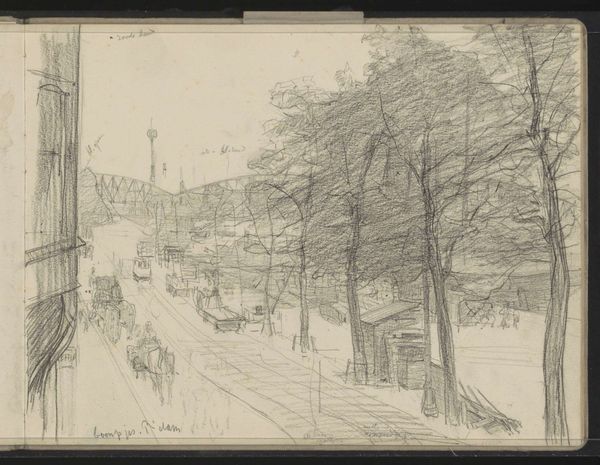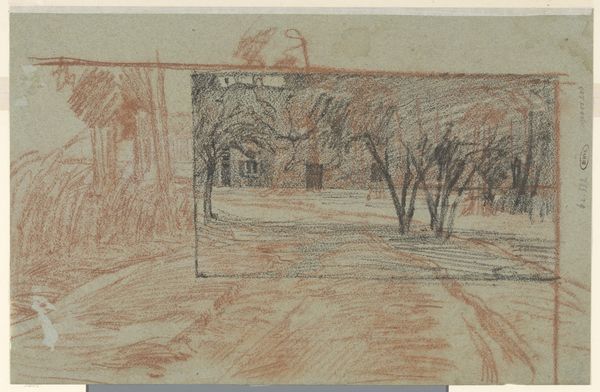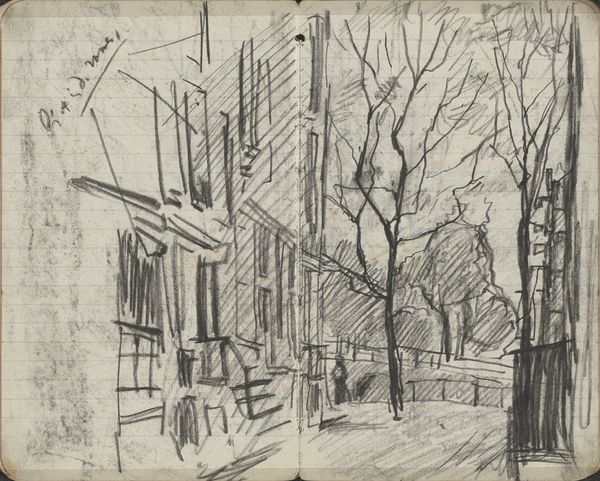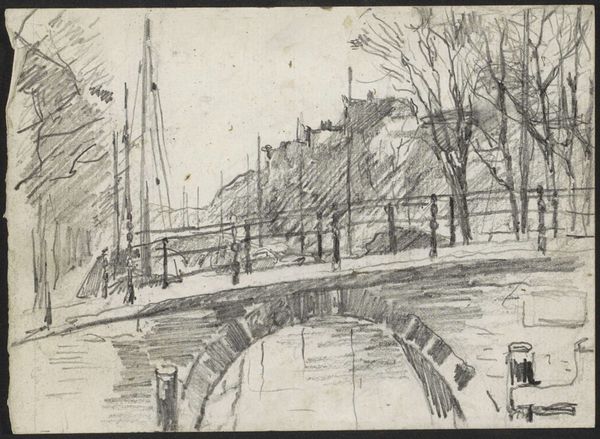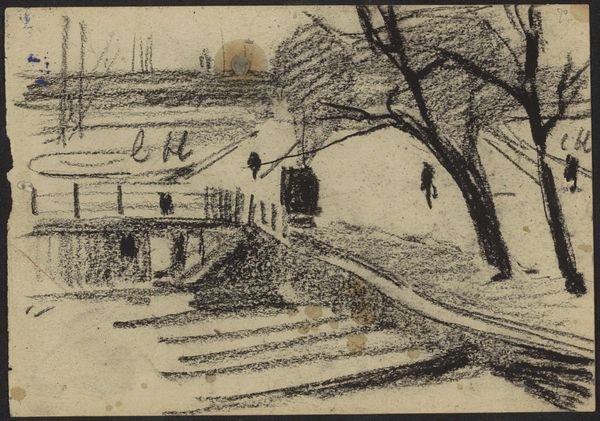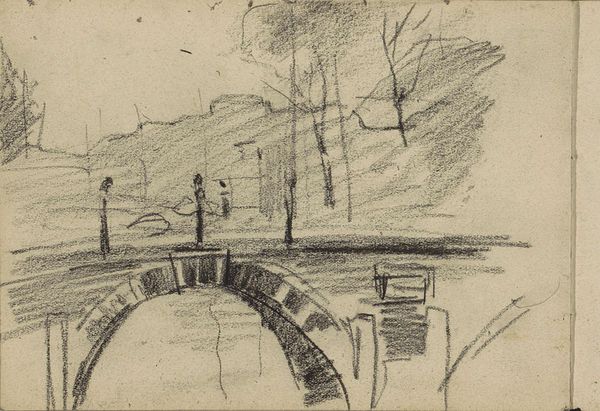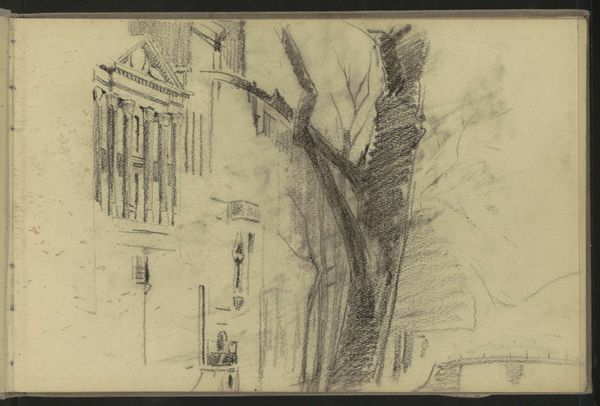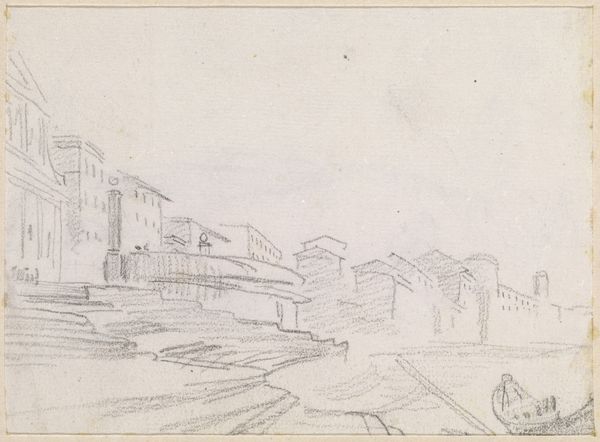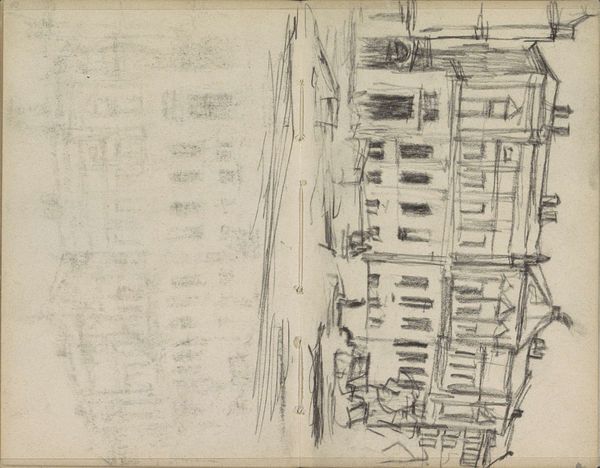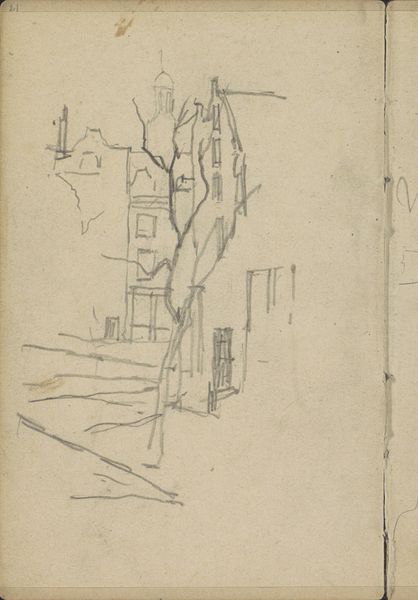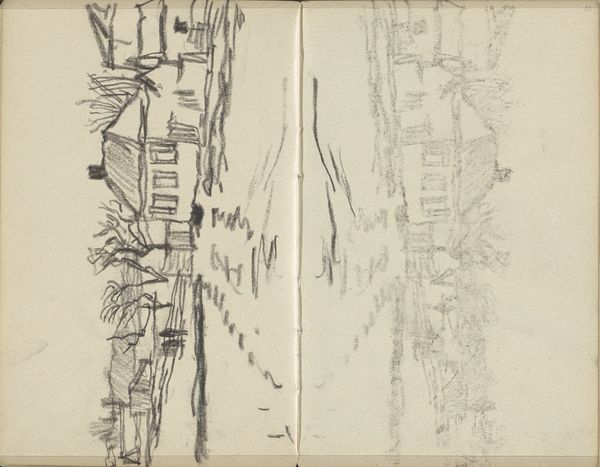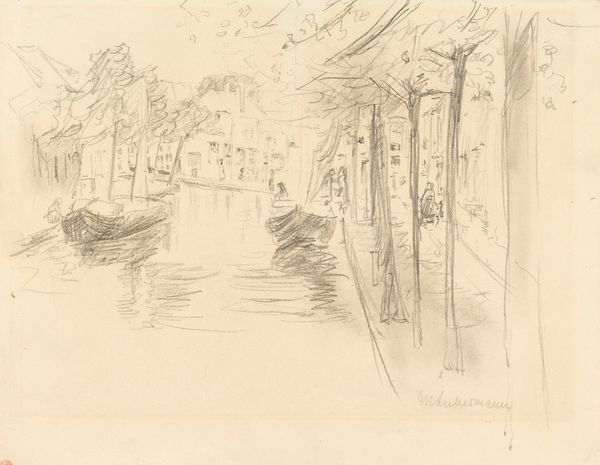
Dimensions: height 141 mm, width 187 mm
Copyright: Rijks Museum: Open Domain
Curator: Here we have Willem Witsen’s “Gezicht op de brug Lekkeresluis te Amsterdam,” a graphite and pencil drawing created circa 1903-1904. It’s currently held here at the Rijksmuseum. Editor: My first thought is the starkness of the sketch. The gray washes and unrefined lines suggest a very gloomy and sparse landscape, despite presumably being a well-trafficked part of the city. Curator: The landscape itself speaks volumes about urban life during the early 20th century, a moment when the aesthetics of the city were evolving through functionalist needs of urban growth, but maintaining some visual order. Bridges in cityscapes aren’t just practical; they're loaded symbols. They represent connections, transitions, sometimes even divisions. The way Witsen portrays this particular bridge and surrounding area is fascinating. Editor: Exactly, the gloom casts this liminal zone, a social bridge perhaps, between the world of labor and commercial activity. Can you say a little more about the symbols related to bridge architecture itself? Curator: Absolutely. In iconographic terms, bridges carry several layered meanings depending on who and when. Medieval paintings often featured bridges in their imagery representing transition in many different meanings; in psychological terms a bridge suggests building better relations between one point to another. Furthermore, a symbol of hope across otherwise impossible divisions between nations or social strata, which is quite significant here in Witsen's piece when you analyze the era. Editor: True, the grittiness of daily life becomes the image itself. I am wondering if it is a subtle commentary about industrial development on the city’s atmosphere, perhaps speaking of the marginal populations also affected by the constant transitions. What are your feelings about how it reflects changes for women, children, people of color who had begun sharing previously enclosed or homogenous spaces? Curator: I hadn't considered it precisely that way. This piece shows more like a capture, with little or no narrative besides its own depiction, so to speak. Its value resides mainly in what is explicit in its lines as they construct an existing, visual representation and as we are reading it after so many decades it makes us add interpretations of it. The beauty is how the explicit intersects with the implicit, opening room for individual subjective perspectives that can change history! Editor: It makes you wonder about who the artist was drawing for—a look into an early Amsterdam's industrial cityscape and all its bridges in between. Well, a really interesting look at urban progress captured through an image, bringing more to question on societal development! Curator: A symbolic visual metaphor—it shows a moment in time with great projection into what lies beneath its graphite markings, so thank you for these remarks!
Comments
No comments
Be the first to comment and join the conversation on the ultimate creative platform.

